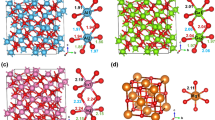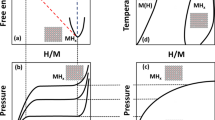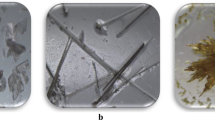Abstract
Reaction mechanism of urethane components (phenyl isocyanate and isopropanol) on Al hydroxide surface was studied using molecular modeling, and compared with real systems by measurement of electrochemical potential and optical observation. Charge of the phenyl isocyanate was concentrated on N and O atoms, implying that the reaction of the phenyl isocyanate on substances takes place through these atoms. Due to low energy difference between the lowest unoccupied molecular orbital (LUMO) of the phenyl isocyanate and the highest occupied molecular orbital (HOMO) of Al hydroxide, it was found that the mixture of phenyl isocyanate and alcohol segregates to the Al surface. Heat of formation for the reaction steps of the phenyl isocyanate on the Al hydroxide cluster is negatively larger than that of the isopropanol-Al interaction. Variation of electrochemical potential of Al surface in the urethane reactants was measured. As a result, it was found that the phenyl isocyanate rapidly reacted with the Al surface, and the reaction products were observed after drying. An optical micrograph of the Al sample held in the isopropanol was very similar to that for a bare Al surface. Evolution of bubbles on the Al surface was expected to be H2O formed by the formation of hydrogen bonding between the urethane and the hydroxyl groups bound on the Al surface.
Similar content being viewed by others
References
R. M. ROWELL and W. D. ELLIS, in “Urethane Chemistry and Applications”, edited by K. N. Edwards (American Chemical Society, Washington D.C., 1981) p. 263.
A. OTTENS, P. KELLER, L. BERTUCELLI and M. VREYS, in Proceedings of the Polyurethanes 1997 Conference (Technomic Pub., Lancaster, 1997) p. 27.
S. SIVAKAMASUNDARI and R. GANESAN, J. Org. Chem. 49 (1984) 720.
J. GAHDE, J. F. FRIEDRICH, R. GEHRKE, I. LOESCHCKE and J. SACHSE, J. Adhes. Sci. Techn. 6 (1992) 569.
M. M. CHEHIMI and J. F. WATTS, J. Adhes. Sci. Techn. 6 (1992) 377.
T. SUGAMA, L. E. KUKACKA, C. R. CLAYTON and H. C. HUA, J. Adhes. Sci. Techn. 1 (1987) 265.
M. E. KIMBALL, Adhes. Age, June (1981) 21.
J. W. HOLUBKA, R. A. DICKIE and J. C. CASSATTA, J. Adhes. Sci. Techn. 6 (1992) 243.
J. B. FORESMAN and A. FRISCH, “Exploring Chemistry with Electronic Structure Methods” (Gaussian Inc., Pittsburgh, 1994).
M. J. FRISCH, A. FRISCH and J. B. FORESMAN, “Gaissain 94 User’s Reference” (Gaussian Inc., Pittsburgh, 1996).
D. G. LAY and P. CRANLEY, Adhes. Age May (1994) 6.
Author information
Authors and Affiliations
Rights and permissions
About this article
Cite this article
Kim, J., Cho, J. & Lim, YS. Bonding of urethane reactants to aluminum surface. J Mater Sci 40, 2789–2794 (2005). https://doi.org/10.1007/s10853-005-2409-6
Issue Date:
DOI: https://doi.org/10.1007/s10853-005-2409-6




